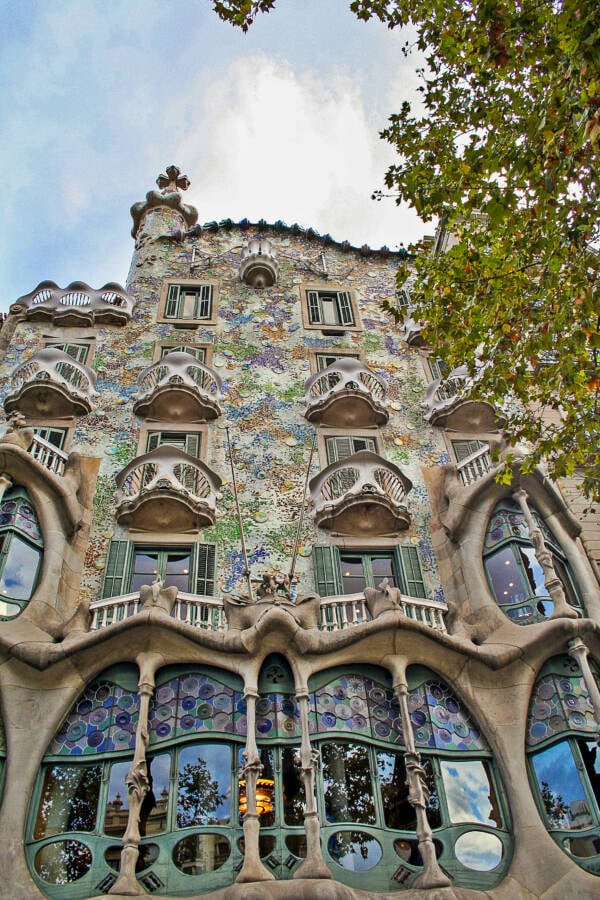Gaston Bachelard’s exploration of language, distinguishing between the utilitarian “signification” and the creative “poetry,” provides a lens through which we can analyse the intersection of language and architecture. In Michael Graves’ “A Case for Figurative Architecture,” the analogy between common language and the internal structure of a building is drawn, emphasising the pragmatic and technical aspects as akin to language’s utilitarian function. However, poetic form in architecture, according to Graves, involves the integration of societal myths and rituals, transcending the purely functional.
Antoni Gaudi’s architectural narrative exemplifies the fusion of utilitarian and poetic elements. Gaudi’s buildings, described as three-dimensional texts, intertwine a constructive narrative with textural, chromatic, and decorative inferences. The syntagmatic relation of architectural elements, such as columns, windows, and walls, creates a semantic field rich in metaphor and symbol. Gaudi’s unique style, rooted in his Catalan origins, embraces both the utilitarian language of construction and the creative, poetic language of symbolism.
Umberto Eco’s assertion that any object, including architecture, can communicate a message aligns with Bachelard’s dual functions of language. Analysing the transmission of meaning in architecture through the lens of Ferdinand de Saussure’s theory of signs, Eco emphasses the arbitrary and conventional relationship between signifiers and signifieds. Applying Saussure’s architectural analogy, an “architectural sign” becomes any part of a building that relates syntagmatically to other parts and associatively to various styles.

Gaudi’s work, especially exemplified in Park Güell, integrates nature as a significant element. The architectural signs draw inspiration from the Catalan landscape, reflecting the terrain, light effects, and natural forces. The syntagmatic relations of architectural units in Park Güell, with their ornamentation and organic motifs, create a figurative meaning that resonates with Art Nouveau and other styles. The architectural signs, through their interdependence, interweave signification with poetry, capturing the essence of nature and evoking emotional responses.
Colour, as a signifier in Gaudi’s architecture, disrupts the automatism of language. Gaudi’s belief that ornamentation should be coloured manifests in Park Güell through trencadis, broken pieces of colourful ceramics adorning medallions and benches. The visual patterning created by colour, repetition, rhythm, texture, and form reinforces the poetic language in Gaudi’s work. The use of colour serves as a defamiliarising element, making the architecture strange and capturing the vivid hues of the Mediterranean.

Gaudi’s architecture, as interpreted through Roland Barthes’ perspective, becomes a text constructed of codes and fragments that invite multiple interpretations. The trencadis, for instance, can be read as a vibrant expression capturing the sensual feeling of nature and associating with Art Nouveau. The incorporation of fragments of bottles and cups beyond the common narrative system expands the architectural code, establishing new aesthetic meanings.










